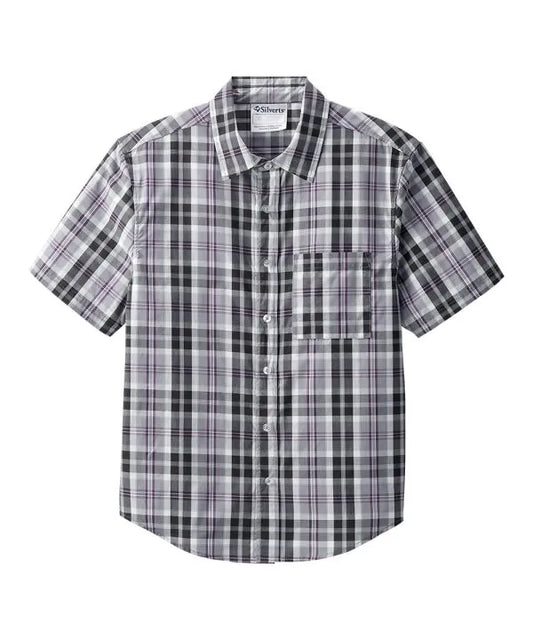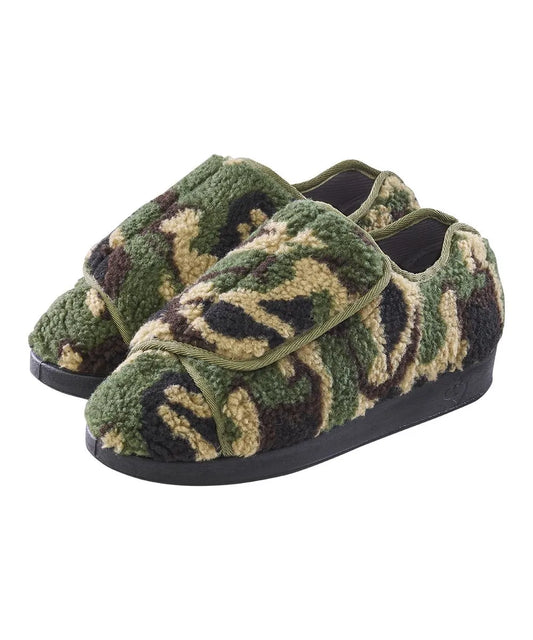By: Sara Arciero
Recovering from surgery or illness is a journey that extends beyond medical care — it’s about regaining comfort, confidence, and a sense of normalcy in daily life. That’s where adaptive clothing truly shines. Thoughtfully designed recovery wear can make dressing easier, protect healing areas, and still look stylish.
From hospital gowns to home outfits, transitional clothing helps bridge that gap between function and fashion — so you can focus on feeling your best while looking your best.
What To Wear Immediately Post-Surgery
Immediately after surgery, comfort and accessibility are top priorities. The body is tender, mobility is limited, and the last thing you want is to struggle with tight necklines or stiff seams. That’s why adaptive fashion — especially post-surgery clothing — is such a game changer.
Soft, non-irritating fabrics like cotton blends or bamboo are ideal because they allow the skin to breathe and reduce friction against stitches or sensitive areas. Loose-fitting garments with magnetic or Velcro closures eliminate the need for overhead dressing or painful arm movement.
For those who need a little extra assistance while seated or lying down, the Women’s Knit Pants with Back Overlap offer discreet coverage with overlapping panels that open fully at the back. This thoughtful design makes changing easier for caregivers while maintaining modesty and comfort for the wearer — a perfect combination of function and compassion during early recovery.

Women’s Knit Pants with Back Overlap
For example, June Adaptive offers magnetic-closure shirts designed with hidden magnets along the front placket. These allow you to dress and undress effortlessly, even with a limited range of motion — a huge help for anyone recovering from shoulder, chest, or abdominal surgery.
Another essential is side-zipper pants, which open along the leg for easy dressing without bending or tugging. These adaptive pants are great for hospital stays and early recovery days, making them easy to slip on over bandages or braces.
Key features to look for right away post-surgery:
- Tag-free labels to prevent itching.
- Breathable, stretchable fabric.
- Minimal seams or pressure points.
- Open-front or side-zip designs for pain-free dressing.
Early recovery is all about gentle, functional comfort — without sacrificing style. Many adaptive pieces look just like everyday wear, blending seamlessly with your wardrobe as you regain strength.
Features To Look For In Recovery Wear
When choosing post-surgery clothing, the goal is to balance accessibility, protection, and adaptability. Every recovery journey is different, but some key features make life easier for almost everyone.
- Easy Closures: Look for magnetic snaps, front zippers, or Velcro fastenings. They’re perfect for people who can’t raise their arms, have limited dexterity, or are using assistive devices.
- Adjustable Fit: Elastic waistbands, drawstrings, and flexible panels accommodate swelling or bandages.
- Soft, Durable Materials: Fabrics like modal or bamboo rayon are gentle on sensitive skin but firm enough for repeated washes — essential during recovery.
- Accessible Openings: Garments with side access or shoulder openings make medical checks, wound care, or physical therapy simpler.
June Adaptive’s front-closure tops and adaptive lounge pants combine these elements beautifully — prioritizing comfort while maintaining an everyday, flattering silhouette.
These features aren’t just practical; they promote independence. For many people recovering from surgery, being able to dress without assistance is a huge emotional boost that supports both physical and psychological healing.
How To Dress Wounds While Staying Stylish
One of the most common challenges during recovery is figuring out how to cover or access wounds, drains, or braces without feeling self-conscious. The great news is that adaptive fashion allows you to protect healing areas while still expressing your personal style.
Clothing with strategic openings — such as discreet zippers along the arm or side — allows easy access to medical sites for cleaning or treatment without removing the entire garment. Likewise, overlapping panels can provide coverage without putting pressure on wounds.
For example, a soft, front-closure top with magnetic fastenings is ideal for chest or upper-body recovery. It allows dressing without lifting the arms, prevents strain, and looks polished enough for everyday wear. June Adaptive’s pieces are designed with these details in mind — stylish enough for visitors or errands, yet gentle enough for healing skin.
Colour also plays a role in post-surgery style. Darker shades or subtle patterns can discreetly hide stains or marks from dressings, while light tones create a soothing, calm feel that’s perfect for recovery days.
When it comes to bottoms, adaptive pants with full-length zippers or wide openings let you accommodate braces, swelling, or wound dressings without discomfort. Pair them with a soft, breathable adaptive top, and you’ll have an outfit that feels just as good as it looks.
Pro tip: Keep a few go-to sets of recovery-friendly outfits. It saves you the energy of choosing each day while ensuring you always have something comfortable, clean, and confidence-boosting to wear.
For example, a blouse such as June Adaptive’s Women’s Lace Top with Back Overlap features a discreet open-back design with shoulder snaps — allowing easy access for dressing or wound care while maintaining the look of a stylish top.
Women's Lace Top with Back Overlap
Transition Pieces That Work For Multiple Stages
One of the most significant advantages of modern adaptive fashion is its versatility. The best recovery pieces grow with you — from hospital to home to full mobility.
Take side-zip pants as an example. They’re perfect in the early stages when you need full access for wound care or mobility aids, but later, you can simply zip them up and wear them as stylish everyday trousers.
The same goes for adaptive tops with hidden magnets or Velcro tabs. What starts as a recovery essential can easily transition into a wardrobe staple thanks to subtle, modern design.
To maximize your wardrobe, look for these transitional features:
- Neutral colors and classic cuts that blend into your existing closet.
- Durable materials that withstand frequent washing as you heal.
- Adjustable fits that adapt to changing body needs (like swelling or regained strength).
- Layering options, such as adaptive cardigans or jackets, to help control temperature changes — common during healing.
June Adaptive’s product line excels here, with pieces that look polished yet feel therapeutic — think adaptive cardigans, zip-front pants, and easy-on shoes that make stepping out a breeze.
These designs support your journey not just physically, but emotionally — helping you feel put-together again as you transition from recovery to everyday life.
One of the most significant advantages of modern adaptive fashion is its versatility. The best recovery pieces grow with you — from hospital to home to full mobility.
Take the Women’s Diamond Neck Top with Back Overlap, for example. Its graceful neckline and open-back overlap design make it easy to put on without lifting your arms, while still looking refined enough to wear out for coffee once you’re back on your feet. It’s a perfect example of how adaptive pieces can move with you through every recovery stage — from quiet rest days to confident reentry into daily life.
Women’s Diamond Neck Top with Back Overlap
Where To Find Fashionable Recovery Clothing
Finding clothing that is both adaptive and stylish used to be a challenge. Thankfully, that’s changing. Brands like June Adaptive are leading the way in creating inclusive, fashion-forward designs that prioritize accessibility without compromising aesthetics.
When shopping for recovery clothing, look for retailers who specialize in adaptive clothing for all ages and abilities. These companies understand the nuances of dressing with limited mobility, post-surgery needs, or chronic conditions.
June Adaptive offers a wide selection of thoughtfully engineered apparel — from magnetic shirts and front-zip bras to side-opening pants and adaptive footwear. Each piece is designed to empower independence and confidence at every stage of recovery.
Their website also includes easy navigation, size-inclusive options, and detailed descriptions about accessibility features, making it simple to find pieces that meet specific recovery needs.
Final Thoughts
Healing is about more than just rest — it’s about reclaiming independence, confidence, and comfort in your own skin. The proper adaptive clothing can make that process easier, offering practical solutions with a touch of personal style.
From magnetic-closure tops that simplify dressing, to side-zip pants that accommodate healing wounds, and adaptive footwear that ensures safety and stability — these thoughtful innovations redefine what recovery wear can be.
With brands like June Adaptive, hospital-to-home fashion is no longer about compromise. It’s about empowerment, dignity, and feeling like yourself again — every step of the way.















